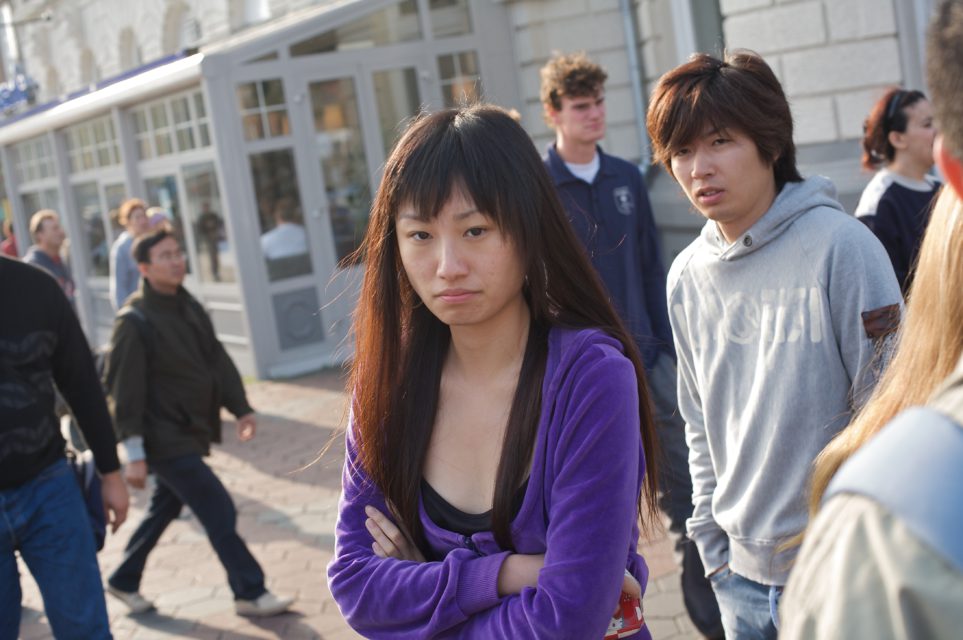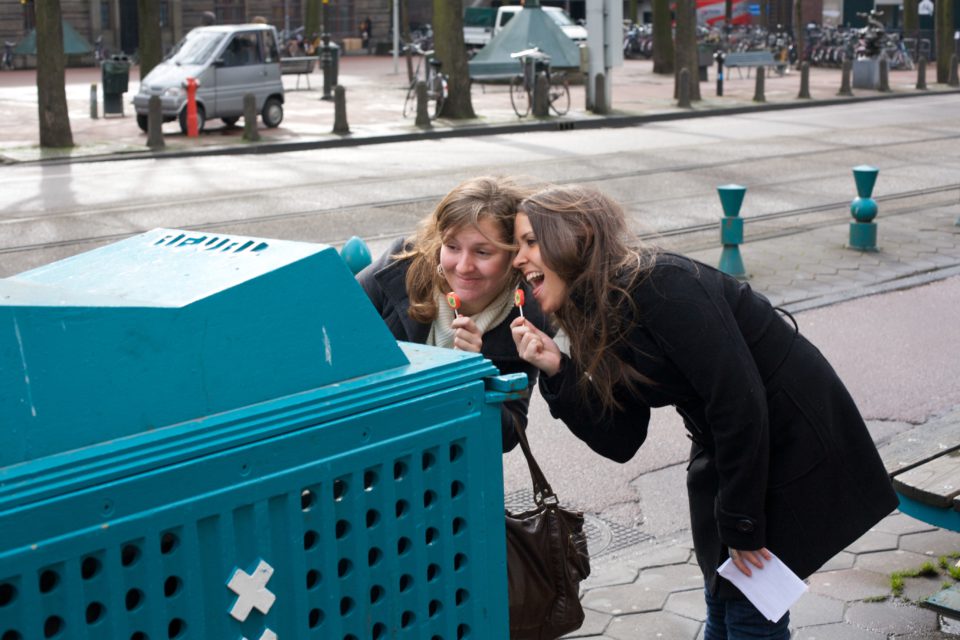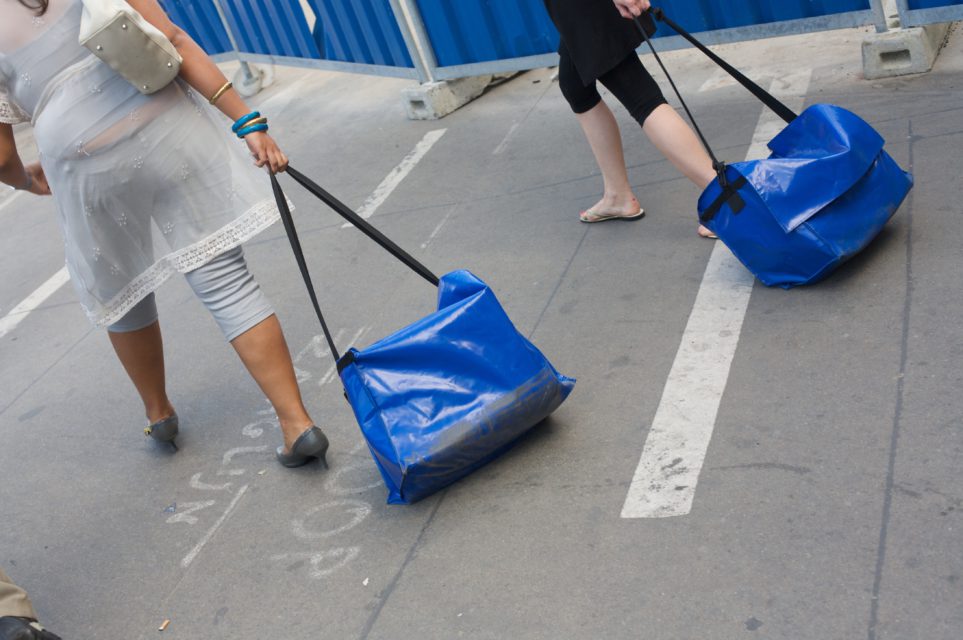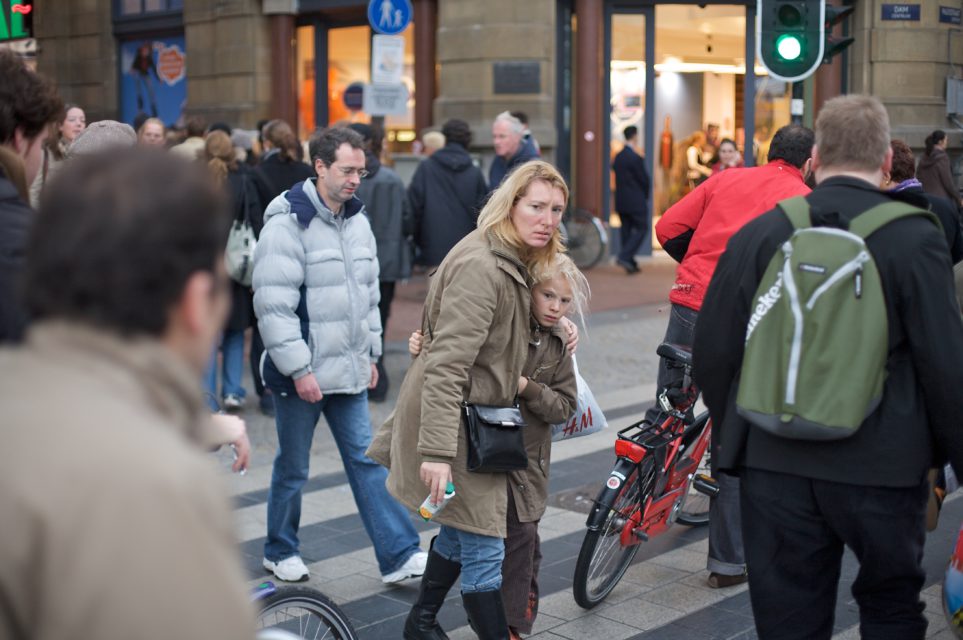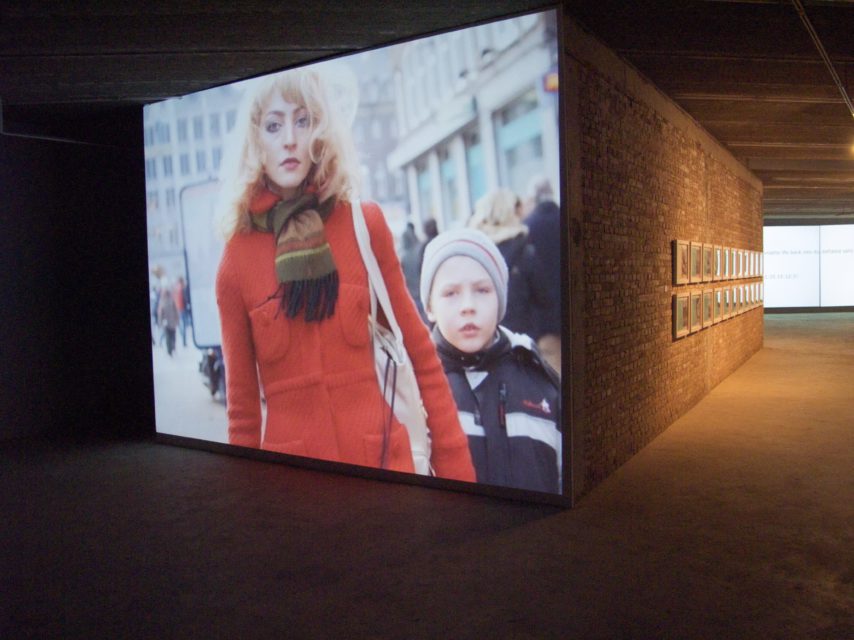In his project Spectator, photographer Theo Niekus focuses on the street life in Amsterdam’s consumer centre. The area, roughly between Central Station, Rembrandt Square and Leidse Square, is a place where tourists and locals mix in what often looks like a desperate attempt to shop for anything edible and to be entertained by the act of buying. The hectic behaviour, the density of people and the overall ugliness feels apocalyptic, reminding the viewer of a 16th-century Brueghel painting.
Street photography frames a moment in the ever changing and moving organism we call ‘city’. It highlights aspects of daily life that all too often go unnoticed. As such, street photography becomes an analysis of our time and culture – the camera functions as the artist’s microscope.
As the de facto chronicler of Amsterdam street life, Niekus has lived the changes in street culture over the past 20 years. Police presence has increased considerably – you only have to think of the omnipresence of surveillance cameras. Minor offences lead to exaggerated police reactions on an almost daily basis. Niekus himself became a victim of police intimidation when he was taken to court for ‘hanging around for no specific reason’. However, Niekus acknowledges the increasingly aggressive, apathetic and anti-social behaviour of the public on the street; not only towards the presence of his camera, but also towards each other. For him, this behaviour is the product of the commercialisation of public space on the one hand and public order regulations on the other. Regulated freedom becomes a burden.
Formally speaking, his images are as unpretentious as the life they document: no visual drama is added, not a single shot is staged. Niekus never uses a flash and never asks. Thus his work, recording the banal, is confrontational and immediate. The viewer can indentify with the situation because it remains tangible and becomes part of Niekus’ observation. This is where the roleplay of his images begins, photographer and viewer become part of the same scene – just like the people in the photographs.
Exhibition
As an installation, Spectator reflects the fast-paced and inescapable life of Amsterdam as a consumer’s urban hunting ground. It plays with the illusions of the omnipresent observer and the observed. The viewer becomes immersed in the roleplay about consumerism, public regulations, urban life and daily curiosities.
Film
Theo Niekus’s images are as unpretentious as the life they document: no visual drama is added, not a single shot is staged. Niekus never uses a flash and never asks. Thus his work, recording the banal, is confrontational and immediate. The viewer can indentify with the situation because it remains tangible and becomes part of Niekus’s observation. This is where the roleplay of his images begins, photographer and viewer become part of the same scene – just like the people in the photographs.
